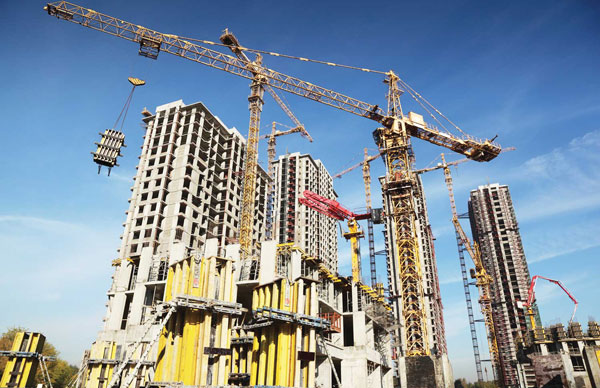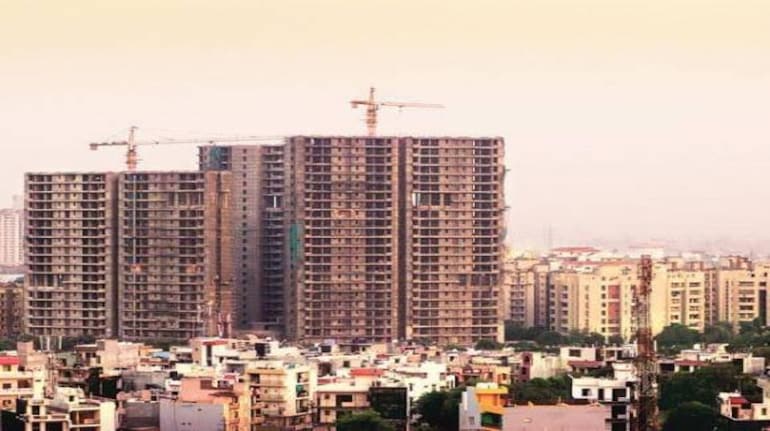India’s Real Estate Market Shines Forth To Hit A 10-Yr Peak In Major Cities, But Is The Sector Nearing The Pumpkin Hour?

India’s Real Estate Sector Hits A New Peak
In the past year, the job market has been dogged by gloom, with companies across the board opting to downsize or resize, resulting in thousands of job losses. One would assume that this would seep into the economy and result in tightening of the purses.
However, on the contrary, one sector that requires tremendous investment over a long period of time is the housing property market and going by the recent numbers, it seems to be at an all-time high.
So much so that India’s housing property market is setting new benchmarks with robust sales growth despite higher loan rates and property prices, the top eight cities, including Mumbai, Delhi-NCR, Bengaluru, Pune, and Hyderabad, are leading this uptrend, helping the country’s residential real estate market reach an 11-year high in sales volume in the first six months of 2024.
 The Real Estate Market On A High
The Real Estate Market On A High
According to the latest data from Knight Frank India, total sales across the top eight cities recorded 11% on-year growth at 173,241 apartments, and development activity has intensified to tap surging demand for residential properties.
The total 183,401 units launched during January-June marked a 6% rise from the year earlier and a decadal-high in terms of units launched in a half-yearly period.
“India’s property market has been buoyant in the last few quarters owing to the strong economic fundamentals and stable socio-political conditions. Consequently, the two biggest segments of the realty sector — residential and office — have recorded decadal-high performance, said Shishir Baijal, chairman and managing director of Knight Frank India.
He expects a strong finish to this calendar year with record-high deals in both residential and office transactions.
“This growth is firmly an chored by the premium category which saw a significant rise moving from 15% in H1 2018 to 34% in H1 2024…While we appreciate the rise in the premium sector, the corresponding decline in the lower price categories should be addressed to ensure that there is more inclusive growth of the market,” said Gulam Zia, senior executive director, research, advisory, infrastructure and valuation at Knight Frank India.
He expects the sales momentum to stay robust for the rest of the year amid stable macro conditions and the Indian economy continuing to grow. Of the 183,401 residential units launched in the first half of this year, Mumbai led the market with 46,985 units, while Kolkata saw the biggest percentage increase at 60%, followed by Pune at 32%.
The quarter-to-sell (QTS) level time needed to sell entire inventory in the eight markets declined to 5.9 quarters or 18 months from 9.5 quarters in the first half of 2021 underscoring improving fundamentals.
The QTS level of the premium category depicted a healthier picture at 5.1 quarters, indicating that inventory is still not a concern.
Mumbai saw the highest sales of 47,259 units, a 16% on-year growth. Kolkata clocked the highest home sales growth in percentage terms at 25%, followed by Ahmedabad at 17%.
Residential units priced over ₹1 crore comprised 41% of total sales; sales in this segment have surged 51%, becoming the primary driver for overall sales growth during the period.
However, the sales share of residential properties priced at ₹50 lakh and below fell to 27% from 32% a year ago; rising property prices, higher home loan rates, and the pandemic’s disproportionate impact have dampened demand in this category.
This contrasts sharply with the 54% sales share seen in the first half of 2018.
However, many experts are wondering if India’s hot real estate market is, in fact, nearing a peak. So, what is the viewpoint?
 Gulam Zia, senior executive director at property consultant Knight Frank India, stated that India is at 9 o’ clock on the property clock and it will take at least two to three years to reach 12 o’clock (the peak).
Gulam Zia, senior executive director at property consultant Knight Frank India, stated that India is at 9 o’ clock on the property clock and it will take at least two to three years to reach 12 o’clock (the peak).
It will hinge on not just a more widespread demand for homes and offices but also smart supply and price management by the country’s top developers.
Therefore, it is safe to assume that this high is likely to continue, although experts believe that the rate of growth may slow down over time.
Even though India’s real estate sector has taken a decade to recover, it is one of the key factors supporting India’s world-beating GDP growth.
To put the figures into perspective, new home sales at 329,000 units in the country’s top eight cities last year were the highest in ten years, on the other hand, new office rentals, at 60 million square feet, revived to near pre-Covid highs — both in turn fueling construction activity and jobs.
The $480 billion real estate sector accounts for almost a fifth of the jobs in the country.
And even though the highs continue well into 2024, history shows that the real estate sector needs to be watched closely through the cycle of shine to dimming.
 So what has led to the uptrend in the realty sector?
So what has led to the uptrend in the realty sector?
The factors that have led to exceptional growth in the real estate sector, especially in the housing sector, are regulation, leading to consolidation, and the wealth effect.
The creation of a real estate regulator in 2016 brought more transparency and financial discipline to the sector, and consolidation among developers has meant better-managed projects; at the same time, a booming stock market has expanded home-shopping budgets.
The pandemic is widely credited for having fueled the desire for larger homes. Yet its real impact was via cheaper home finance as interest rates declined, and lower transaction taxes and charges made a significant impact on high-value purchases.
This improved slumping real estate return ratios and encouraged Indians to channel savings (and borrowings) to homes, unleashing demand that had been pent-up since 2018, said a top realtor.
A Crisil Quickonomics report showed that inflation-adjusted returns on real estate finally turned positive last fiscal year. However, among all the upswing, one class of home buyers seems to be missing.
At one level, the housing boom is broad-based, with tier-two cities like Lucknow, Ahmedabad, Indore, and Jaipur supplementing growth in the top metros of Mumbai, Delhi, Bengaluru, Hyderabad, and Chennai.
According to Prashant Thakur, regional director and head of research at property consultant Anarock, ten to 15 smaller cities are participating in this recovery, where people are upgrading from individual houses to gated communities and has pointed to Lucknow and Bhubaneswar as emerging markets to watch.
However, the uptrend in sales, according to data, seems to be skewed toward premium homes—priced at 15 million rupees ($180,000) and more—a segment that has tripled market share to 21% in five years. Affordable housing’s share is down from 37% to 20%, reflecting the K-shaped recovery in the economy.
Hence, it seems that the wealthy have bounced back and upped housing sales, while India still has a huge housing deficit, especially at the bottom of the pyramid.
According to Thakur, for the real estate sector to continue its upswing, the demand for affordable housing, the largest segment, must revive; he estimates the realty sector is at the mid-point of an 8- 10-year upswing, which may contract by two years if affordable housing sales lag.
The sector is also betting on the Modi government’s step up of incentives.
 When it comes to the commercial real estate sector, which has seen top international investors, a new source of demand is now fuelling the revival—office leasing activity surged late last fiscal year (FY24) and is back to pre-pandemic levels. Vacancy levels are lower, and rental rates are up 4%- 5% in the top metros.
When it comes to the commercial real estate sector, which has seen top international investors, a new source of demand is now fuelling the revival—office leasing activity surged late last fiscal year (FY24) and is back to pre-pandemic levels. Vacancy levels are lower, and rental rates are up 4%- 5% in the top metros.
Knight Frank states that this market has traditionally been led by multinational companies, IT service exporters, and, more recently, large global capability centers. GCCs with premium talent are occupying five times more space per person than BPOs.
However, now there’s new demand from what he labels as India Facing Businesses — those focused on Indian consumers rather than any imports or exports.
This segment has risen to 37% of all office space transactions in the January to March quarter, eclipsing GCCs at 31%.
The third factor that can make or break this upcycle is home prices.
Residential property prices were up 6% in Mumbai, 9% in Bengaluru, and 13% in Hyderabad from January to March last year, and unsold inventory has also edged up in the mid-and premium segments.
Therefore, unlike the 2014 boom, where speculators ruled, this upturn is led by real demand. No developer can increase prices randomly as 80% of the buyers are end-users and will pull back if prices rise by more than 2% over inflation in a year, Anarock’s Thakur cautioned.
However, the price rise may have a limited impact on luxury home buyers; it could also be moderated by new supply.
At the same time, land purchases were up 58% (by area) in fiscal 2024, most of it earmarked for residential projects.
Therefore, the peak is yet to come, as a steady supply may slow the clock on this cycle. When it happens, lower interest rates and cheaper home finance will help keep the pumpkin hour at bay.




